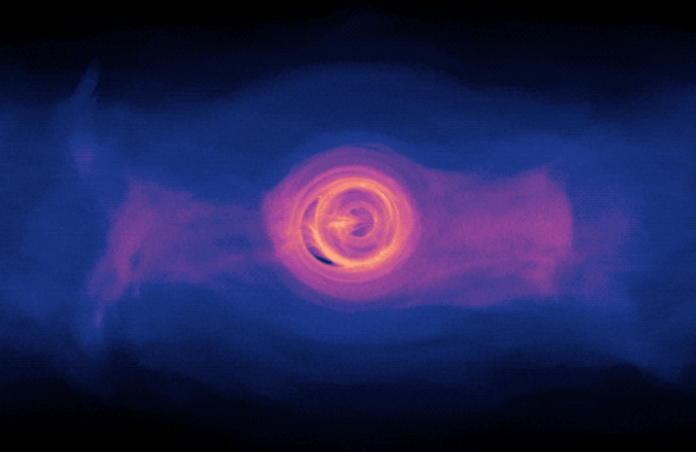Insights into the Intermediate Mass Black Hole in Omega Centauri from Author Max Häberle

Maximilian Häberle, a Phd student at the Max Planck Institute for Astronomy (MPIA), is the lead author of a recently published study on the discovery of an intermediate-mass black hole (IMBH) at the centre of the Omega Centauri globular cluster. The focus of his doctoral research is two-fold: he is heavily involved in the development of advanced astronomical instruments, contributing to both the SDSS-V local volume mapper and the mid-infrared instrument METIS for the extremely large telescope. Besides this, he is also studying the dynamics of globular star clusters, which led him to his aforementioned identification of the IMBH.
Häberle leads oMEGACat II, a catalogue dedicated to the proper motions of stars within the Omega Centauri system. He took over this project from his supervisor Dr. Nadine Neumayer, a research group leader at the MPIAand co-author of both publications, and Anil Seth of the University of Utah. Häberle’s work with Omega Centauri began in mid-2020, primarily focusing on the extensive data reduction and analysis of the kinematics of the stars in the cluster.
“The primary objective of our project was to explore the formation and current dynamics of Omega Centauri,” Häberle explains. The new catalogue was designed to complement oMEGACat I, which includes spectroscopic data and metallicities for 300,000 stars within this system. Together, these resources aimed to provide insights into the system's evolution by examining correlations among different stellar populations and tracing their history within Omega Centauri.
Häberle notes that one of the key questions they aimed to address was the nature of the suspected black hole at the centre of Omega Centauri. Since 2008, numerous studies have debated its existence, so his team sought to re-evaluate the situation using improved methodologies. He emphasizes that their approach, while not employing novel techniques, benefits from significantly more and higher-quality data in addition to improved specialized software, notably KS2. In contrast to other studies, they did not rely on developing a complete model to infer the black hole's presence. “Instead, we identified stars that are directly close to the black hole, making our measurements somewhat model-independent.” Häberle adds.
Critics of this conclusion may question the results, but Häberle assures that his team has systematically eliminated other possible explanations. Some alternative mechanisms included the possibility that the escape velocity within Omega Centauri might be higher than previously calculated but rigorously tested this with various models and obtained consistent results. They also considered that the fast stars might not belong to Omega Centauri but are instead moving in front of the system. However, it is unlikely to find so many high-velocity foreground stars clustered in such a small region. Based on their statistical models, only about 0.07 such stars would be expected in that region of the sky.
Looking ahead, Häberle is optimistic about the potential for more precise measurements and a deeper understanding of Omega Centauri. The goal is to observe accelerations and orbits of stars near the suspected black hole, similar to observations in the Milky Way's centre. Due to the smaller mass of Omega Centauri's black hole, its gravitational influence is weaker, resulting in longer orbital periods for the surrounding stars—potentially spanning hundreds of years. Detecting such minute accelerations is beyond current observational capabilities, as even slight inaccuracies can lead to significant errors if extrapolated over long periods. However, Häberle is hopeful that the upcoming generation of ground-based telescopes will improve these observations.
What was most exciting, however, was that this discovery relied entirely on archive data publicly accessible in the Hubble archive. Omega Centauri is a frequent target of Hubble for calibration purposes. “The only thing missing was someone willing to take the time to investigate what we already had. That tells me there are potentially many other exciting discoveries lurking within archival datasets, waiting to be found,” Häberle concluded.
--
Journal Source: M. Häberle et al, Fast-moving stars around an intermediate-mass black hole in ω Centauri, Nature, Vol 631, (2024), DOI: https://doi.org/10.1038/s41586-024-07511-z
Cover Image: NASA’s Goddard Space Flight Center/Scott Noble
